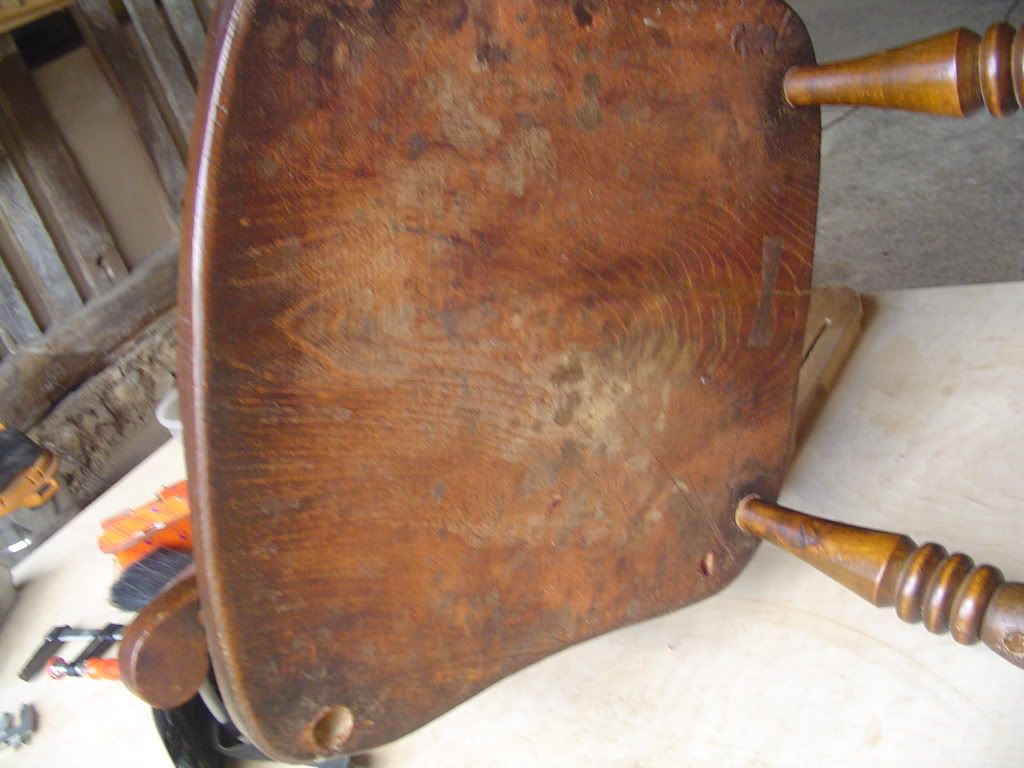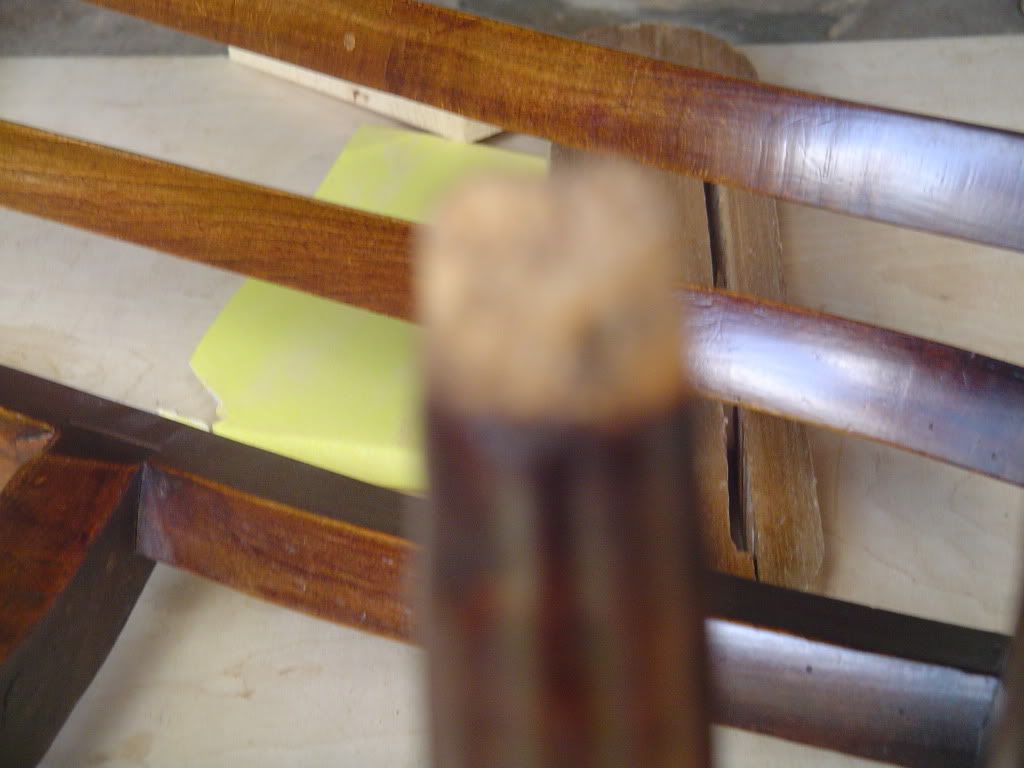Froggy
Established Member
Hi Everyone,
An old friend has just brought me a beautiful old chair that collapsed when he sat on it. It was his wife's grandmother's and he is desperate for me to repair it. I have a couple of issues. I don't want to have to start making new parts as I think it's possibly a fruit wood and even if I could get hold of some (after identifying it!) I wouldn't be able to match the patina of what if probably a 100 year old chair.
So if I clean the joints up I think they may be a bit slack when I reglue. If this is the case, how best to deal with it? Epoxy resin perhaps? And in the second picture you can see the end of the joint is worn. How best to deal with that? I thought about cutting it off, drilling a hole in the spindle and using a dowel to add a piece of oak or something, that won't be seen when the chair is put back together, but would it be strong enough? Any help/advice would be gratefully received.
Thanks Froggy.


Sorry the second photo is out of focus.
An old friend has just brought me a beautiful old chair that collapsed when he sat on it. It was his wife's grandmother's and he is desperate for me to repair it. I have a couple of issues. I don't want to have to start making new parts as I think it's possibly a fruit wood and even if I could get hold of some (after identifying it!) I wouldn't be able to match the patina of what if probably a 100 year old chair.
So if I clean the joints up I think they may be a bit slack when I reglue. If this is the case, how best to deal with it? Epoxy resin perhaps? And in the second picture you can see the end of the joint is worn. How best to deal with that? I thought about cutting it off, drilling a hole in the spindle and using a dowel to add a piece of oak or something, that won't be seen when the chair is put back together, but would it be strong enough? Any help/advice would be gratefully received.
Thanks Froggy.


Sorry the second photo is out of focus.
































